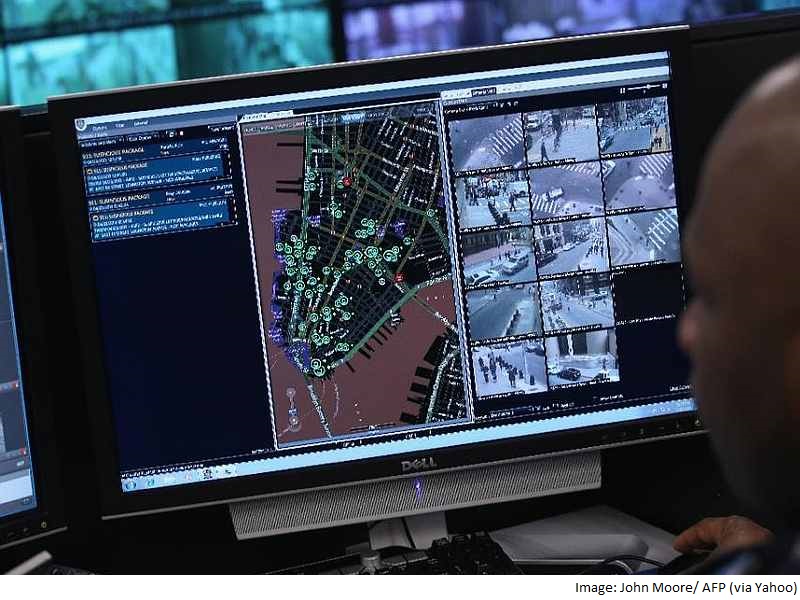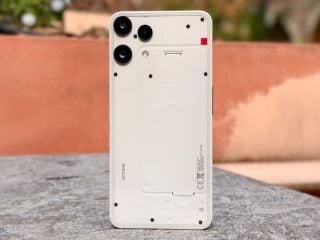- Home
- Internet
- Internet Features
- Heists Go Hollywood With DefCon Hacks
Heists Go Hollywood With DefCon Hacks

Hollywood-style heists took on real-world potential Saturday as hackers at a Def Con gathering showed how to crack safes in full view of security cameras without ever being seen.
Independent computer researchers Eric Van Albert and Zach Banks found a way to pull off the movie-script ploy of intercepting surveillance camera streams and then looping back video of nothing amiss while, ostensibly, safes or vaults are being emptied.
"We set out to create our own device as close to the movies as possible," Van Albert said as the pair demonstrated their work to an overflow crowd.
"To see how possible this kind of attack actually is."
They spent about $500 (roughly Rs. 31,900) to build a device they could splice into an ethernet cable carrying imagery from surveillance cameras to screens being watched by guards.
The creation, a box of electronics, re-routes incoming video feeds to their computer, where software tends to the job of creating harmless looking footage that is then fed to guards to mask a heist.
As in films, a team planning a theft would need to get access to the cable handling surveillance video. After that, a video signal intercept could be controlled from a far off location, according to the hackers.
Once a safe or vault was emptied and the team is safely away, the device could be removed with a victim being none-the-wiser.
Or it could be left in place to taunt guards by routing messages to their video screens or even playing back the heist.
"So, now they go and try to chase you down and stop the robbery, while you are 100 miles away and they are wondering what is going on," Banks said.
Cracking a smart safe
The looping video hack came just hours after researchers for security firm Bishop Fox showed how to hack open a smart safe made by Brinks using a computer thumb drive.
A key to cracking the computerized safe was plugging into a USB port built into one side to allow technicians to fix problems, such as it refusing to open.
The safe cracked by Daniel Petro and Oscar Salazar was designed to scan currency to track how much money was put in by merchants and use the Internet to credit bank accounts accordingly.
The safe has touch screen controls that could have also worked for the hack, but opting for the USB port was much faster because a more powerful computer could be used, according to the researchers.
"You need physical access to do the hack," Petro said. "But you need physical access to carry away the cash, so it is required either way."
Looping video from surveillance cameras might help with that but it could be too late. Petro and Salazar said they shared their research with Brinks, which came up with a fix.
Get your daily dose of tech news, reviews, and insights, in under 80 characters on Gadgets 360 Turbo. Connect with fellow tech lovers on our Forum. Follow us on X, Facebook, WhatsApp, Threads and Google News for instant updates. Catch all the action on our YouTube channel.
Related Stories
- Samsung Galaxy Unpacked 2025
- ChatGPT
- Redmi Note 14 Pro+
- iPhone 16
- Apple Vision Pro
- Oneplus 12
- OnePlus Nord CE 3 Lite 5G
- iPhone 13
- Xiaomi 14 Pro
- Oppo Find N3
- Tecno Spark Go (2023)
- Realme V30
- Best Phones Under 25000
- Samsung Galaxy S24 Series
- Cryptocurrency
- iQoo 12
- Samsung Galaxy S24 Ultra
- Giottus
- Samsung Galaxy Z Flip 5
- Apple 'Scary Fast'
- Housefull 5
- GoPro Hero 12 Black Review
- Invincible Season 2
- JioGlass
- HD Ready TV
- Laptop Under 50000
- Smartwatch Under 10000
- Latest Mobile Phones
- Compare Phones
- Realme P4x 5G
- OnePlus Ace 6T
- OPPO A6x 5G
- Samsung Galaxy Z TriFold
- Poco F8 Ultra
- Poco F8 Pro
- Huawei Mate 80 RS Master Edition
- Huawei Mate 80 Pro Max
- Asus ProArt P16
- MacBook Pro 14-inch (M5, 2025)
- Poco Pad M1
- Poco Pad X1
- Just Corseca Skywatch Pro
- Honor Watch X5
- Acerpure Nitro Z Series 100-inch QLED TV
- Samsung 43 Inch LED Ultra HD (4K) Smart TV (UA43UE81AFULXL)
- Asus ROG Ally
- Nintendo Switch Lite
- Haier 1.6 Ton 5 Star Inverter Split AC (HSU19G-MZAID5BN-INV)
- Haier 1.6 Ton 5 Star Inverter Split AC (HSU19G-MZAIM5BN-INV)

















